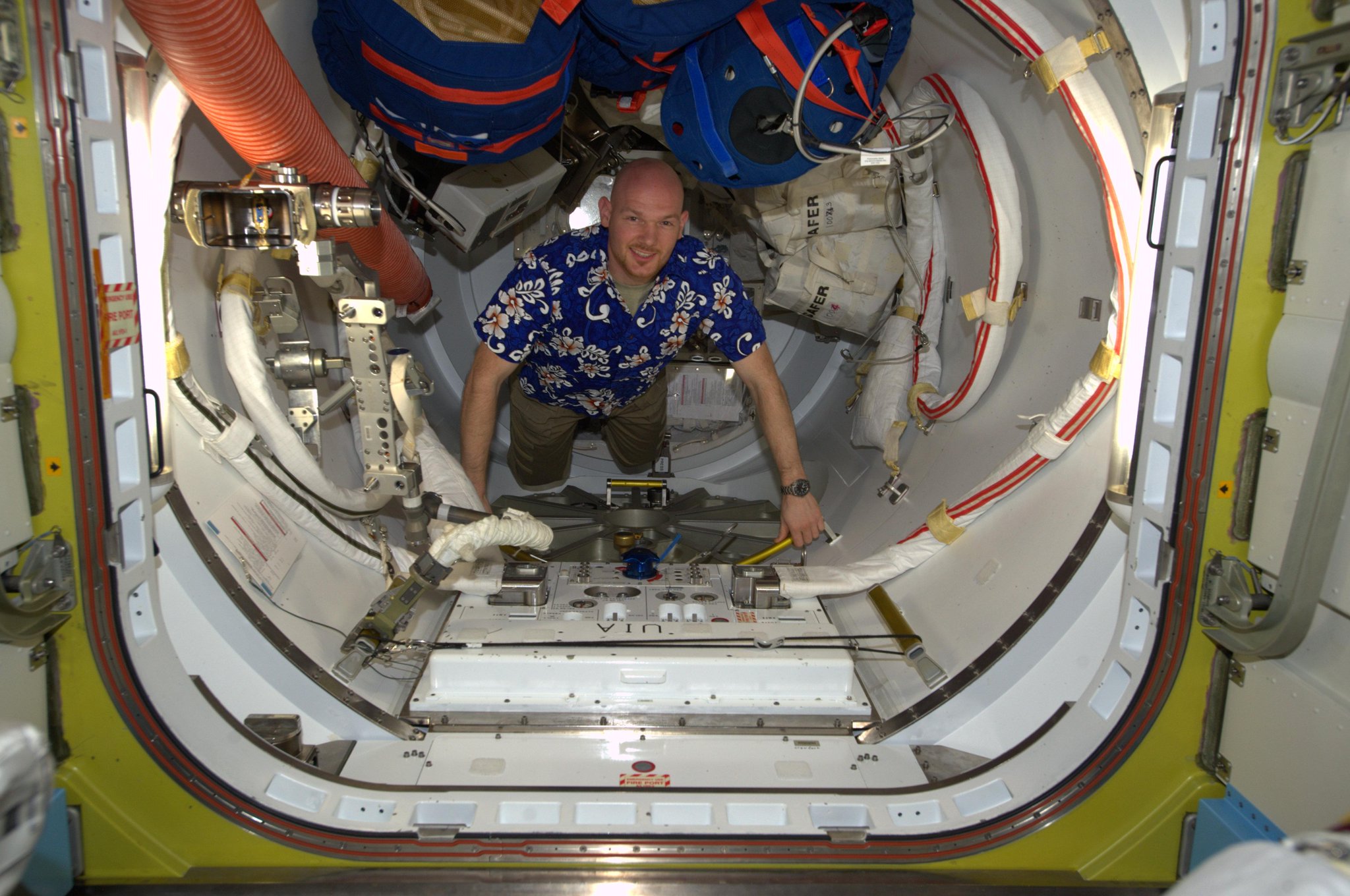According to nasa.gov, the purpose of the spacewalk will be to move a pump unit out to external stowage, and to install the Mobile Transporter Relay Assembly, a backup power source for the ISS's Mobile Transporter (which moves the exterior machinery of the Mobile Servicing System - including the Canadarm 2 - into proper worksite locations.) NASA has released a wonderfully-detailed, point-by-point video simulation of what exactly will transpire on the spacewalk.
On this EVA, Astronaut Gerst will become the third German ever to spacewalk.
Astronaut Wiseman was recently featured on NBC's Nightly News with Brian Williams, elucidating his thoughts on why his job is the best in (and over) the world. An enthusiastic former Naval pilot, he and new ISS crewmate Barry "Butch" Wilson showed their support for their fellow sailors during a Navy/Air Force football game.
 |
| Ships, starships, whatever. |
In other news, this week the ISS confirmed the name change on their official Twitter handle to @Space_Station. Check it out for videos, images, and commentary to keep you updated on everything orbital and awesome. Short astronaut-shot space and ISS experiment videos can also be accessed on Vine via #SpaceVine.
We wish Astronauts Reid and Gerst the best of luck on their upcoming EVA. See you next Sunday...watch this space!
 |
| Alexander Gerst enjoys Casual Friday last week on the ISS, as this week his spacewalking outfit will be much more cumbersome. |


